Description
The instruction for medical use of Durules® Sorbifer® medicine the Trade name of Sorbifer® Durules® the International unlicensed name Is not present the Dosage form of the Tablet, coated Structure One tablet contains active agents: gland (II) sulfate of dry 320 mg (100 mg of iron (II) are equivalent), ascorbic acid of 60 mg, excipients: povidone (K-25), polyethene powder, carbomer 934 P, magnesium stearate, structure of a cover: gipromelloza, macrogoal 6000, titan E 171 dioxide, gland (III) oxide yellow E 172, hard paraffin. The description of the Tablet of a lenticular form, slightly biconvex, coated ochre – yellow color, with an engraving of Z on one party, with a characteristic smell. Pharmacotherapeutic group hematopoiesis Stimulators. Iron preparation. The drugs Fe ++ for oral administration. The ATX B03AA code the Pharmacological Pharmacokinetics properties Durules – the special production technology which provides gradual long release of active agent (iron ions), uniform intake of medicine. Iron is soaked up mainly in a duodenum and proximal department of a jejunum. Absorption of the iron connected with a gem is about 20%, but not tied with a gem gland – about 10%. For effective absorption iron has to be in the form of Fe (II). After intake, ascorbic acid is completely soaked up from digestive tract. Hydrochloric acid of a stomach and ascorbic acid stimulate iron absorption, restoring it from Fe 3+ to Fe 2+. Existence in drug of ascorbic acid creates more favorable conditions for absorption of iron in intestines and improves bioavailability of medicine. The Fe 2+ iron coming to epithelial cells of intestines (ferro a form) is exposed to intracellular oxidation to Fe 3+ (Fairy a form) which communicates with apoferritiny. A part of an apoferritin comes to blood, other part temporarily remains in epithelial cells of intestines in the form of ferritin which will come to blood in 1-2 days or will be brought out of an organism with a stake in the course of desquamation of epithelial cells. About 1/3 iron, coming to blood, communicate with apotransferriny which molecule at the same time turns into transferrin. The complex iron-transferrin is transported in target organs and after linking with the receptors which are on a surface of their cells gets to cytoplasm by means of endocytosis. In cytoplasm iron dissociates from transferrin and again communicates with apoferritiny. Apoferritin oxidizes iron to Fe 3+, and flavoproteins participate in restoration of iron. There are no data on drug pharmacokinetics in an abnormal liver function or kidneys. A pharmacodynamics Iron – the irreplaceable component of an organism necessary for formation of hemoglobin and implementation of oxidizing processes in living tissues. Active ingredient contains in biologically indifferent plastic matrix of spongy structure. When passing through digestive tract from a porous matrix of tablets (within 6 hours) there is a continuous discharge of ions of bivalent iron. The film covering of a tablet and a porous matrix provides long release of ions of iron. Prevention of dissolution of a tablet in a stomach is promoted by a film covering of a tablet which completely breaks up under the influence of an intestinal vermicular movement, at release of active ingredient. Slow release of ions of iron does not lead to creation of high local concentration that allows to avoid irritation of a mucous membrane of digestive tract. Iron is deposited with a significant amount in the form of a myoglobin in muscles. Ascorbic acid slows down ferritin splitting, blocking ferritin autophagy by lysosomes of ferritin and transformation in hemosiderin. Ascorbic acid accelerates absorption of iron in digestive tract, restoring in a stomach iron (III), untied with a gem, to iron (II). Indications – prevention and treatment of an iron deficiency anemia the Route of administration and doses it is necessary to take the Pill entirely, without chewing and not less than for half an hour before meal, washing down with a half of a glass of water. It is not necessary to take a pill in a prone position. To adults and teenagers 12 years are more senior: The recommended dose on 1 tablet 2 times a day (in the morning and in the evening). Patients with an iron deficiency anemia of the II-III degree in case of need according to the recommendation of the doctor can raise a dose to 3-4 tablets 2 times a day (in the morning and in the evening). At emergence of side effects the dose can be reduced half (1 tablet a day). During pregnancy: The recommended dose on 1 tablet a day within the first 6 months and on 1 tablet two times a day in the III trimester and during breastfeeding. Treatment duration: Duration of treatment is established individually, on the basis of results of datas of laboratory of exchange of iron. Treatment should be carried out before normalization of level of hemoglobin, under control of the Fe level to blood and to continue before full saturation of depot of iron within 2 months. At the significant insufficiency of iron the average duration of treatment is 3-6 months. Side effects Often (& gt, 1/100) – nausea, an abdominal pain, diarrhea, a constipation Seldom (& lt, 1/100) – a gullet canker, a gullet stenosis Frequency is unknown (is not defined on the basis of the available data): – hypersensitivity reactions (for example, rash, anaphylactic reaction, a Quincke’s disease) Messages about expected side reactions Providing data on expected side reactions of drug is very important point allowing to carry out continuous monitoring of a ratio risk/advantage of medicine. Health workers should provide information on any expected adverse reactions on the contacts specified at the end of the instruction and also through the national system of collection of information. The contraindication – hypersensitivity to active or any other inactive component of drug – a stenosis of a gullet and/or other obstructive changes of a digestive tract – the increased iron content in an organism (hemosiderosis, hemochromatosis) – repeated hemotransfusions – other types of anemia which are not connected with deficiency of iron except for cases when in other type of anemia the deficiency of iron also develops – children’s age up to 12 years (due to the lack of clinical data) Medicinal interactions is not recommended simultaneous use Sorbifer Durules with the following drugs: – ciprofloxacin: the concomitant use reduces ciprofloxacin absorption approximately by 50% so there is a risk that ciprofloxacin content in blood plasma will be lower, than it is necessary for therapeutic action. – levofloxacin: the concomitant use reduces absorption of a levofloksatsin. – moxifloxacin: the concomitant use reduces bioavailability of a moksifloksatsin almost by 40% therefore if simultaneous use is required, it is necessary to provide the longest possible period between reception of a moksifloksatsin and Sorbifer Durules. – norfloxacin: the concomitant use reduces norfloxacin absorption approximately by 75%. – ofloxacin: the concomitant use reduces absorption of an ofloksatsin approximately by 30%. At simultaneous use of the drug Sorbifer Durules with the following drugs the correction of a dosage of these medicines can be required. The recommended minimum interval of time between reception Sorbifer Durules and these drugs has to make at least 2 hours: – the calcium or nutritional supplements containing magnesium a carbonate and also the aluminum hydroxide or calcium, antacids containing magnesium a carbonate together with salts of iron form a complex which reduces absorption of each other. – captopril: simultaneous use reduces for captopril the area under a curve of dependence of concentration in plasma from time approximately by 37%, presumably because of chemical changes in digestive tract. – zinc: simultaneous use reduces absorption of salts of zinc. – clodronate: the researches in vitro showed that the drugs containing iron form complex connection with clodronate simultaneous use perhaps reduces clodronate absorption. – Deferoxaminum: at simultaneous use the absorption of Deferoxaminum and iron, owing to formation of complex connection decreases. – levodopa: at simultaneous use, ferrous sulfate reduces bioavailability of single doses of a levodopa approximately by 50%, and single doses of a karbidop for 75%, perhaps, owing to formation of chelate complex connection. – Methyldopum: at simultaneous use with iron salts (sulfate or a gluconate of iron) the bioavailability Methyldopums decreases, perhaps, because of formation of chelate complex connection. – Penicillaminum: simultaneous use of Penicillaminum and salts of iron reduces their absorption, perhaps, because of formation of chelate complex connection. – rizedronat: the researches conducted by in vitro showed that the drugs containing iron form complex connections with rizedronaty. Though researches of medicinal interactions were not conducted by in Vivo, it is possible to assume that simultaneous use of these medicines reduces absorption of the rizedronat. – tetracyclines: at simultaneous use the absorption of tetracyclines and iron decreases. In need of a concomitant use, the recommended minimum interval of time between reception Sorbifer Durules and these drugs has to make at least 3 hours. At oral administration, iron inhibits enterogepatichesky circulation of an oksitetratsiksin (doxycycline) and also at its intravenous administration of the last. – hormones of a thyroid gland: at simultaneous use of iron preparations and thyroxine the decrease in absorption of thyroxine is possible that reduces efficiency of replacement therapy. – Cimetidinum: at simultaneous use, the decrease in production of gastric juice caused by Cimetidinum reduces iron absorption. Therefore, intervals between intake of these drugs have to be not less than 2 hours. – chloramphenicol: at a concomitant use the distance of clinical action of treatment by iron is possible. At a concomitant use of drug with tea, coffee, eggs, dairy products, bread from wheat flour, the porridge or food rich with vegetable fibers, decrease in absorption of iron is possible. The interactions connected with ascorbic acid: – increases concentration of salicylates in blood (increases risk of development of a crystalluria), ethinylestradiol, benzylpenicillin, and tetracyclines. – lowers concentration of peroroalny contraceptives. – increases activity of noradrenaline. – lowers anticoagulating effect of derivatives of coumarin, heparin. – improves absorption in intestines of iron preparations and also iron from food (due to transfer of Fe 3+ to Fe 2+). – increases the general clearance of alcohol. – can affect efficiency of Disulfiramum at treatment of an alcoholism. – simultaneous use of ascorbic acid and Deferoxaminum increases iron excretion. Acetylsalicylic acid, oral contraceptives, fresh juice and alkaline drinks reduce absorption and digestion of ascorbic acid. Special instructions At use of drug there is a darkening of a chair that has no clinical value. Drug with care is used in a peptic ulcer of a stomach and a duodenum, inflammatory bowel diseases (enteritis, a diverticulitis, ulcer colitis, Crohn’s disease), chronic diseases of a liver and kidneys. During treatment the control of concentration of hemoglobin and iron of blood is recommended. Complex laboratory and tool control over efficiency of treatment is recommended to spend each 7-14 days depending on an anemia course. Drug is effective only at deficiency of iron. Before an initiation of treatment it is necessary to confirm the diagnosis of deficiency of iron (low content of iron in serum, high general iron-binding ability of serum). Drug is inefficient in other types of anemia which are not caused by deficiency of iron (infectious anemia, the anemia connected with chronic diseases, a thalassemia). Pregnancy and a lactation Drug can be used at pregnancy and in the period of a lactation in therapeutic doses. Features of influence of medicine on ability to run the vehicle or potentially dangerous mechanisms. Does not influence. The overdose Rather low amount of iron can cause intoxication symptoms. There are data that iron content, the equivalent 20 mg/kg, can already cause some symptoms of intoxication, and at the iron content exceeding 60 mg/kg the development of such symptoms is expected. Iron content, equivalent 200-250 mg/kg can lead to death. Symptoms: Iron content in serum can help with assessment of weight of poisoning. Though iron content not always well correlates with symptoms, its concentration defined 4 hours later after reception as follows indicates weight of poisoning: – less than 3 mkg/ml – slight poisoning – 3-5 mkg/ml – moderate poisoning & gt, 5 mkg/ml – a serious poisoning the Maximum concentration of iron is defined 4-6 hours later after iron hit inside. Weak-moderate poisoning: vomiting and diarrhea can develop within 6 hours after reception. Serious poisoning: heavy vomiting and diarrhea, a lethargy, a metabolic acidosis, shock, bleeding from digestive tract, a lump, spasms, hepatotoxicity, later – a digestive tract stenosis. The heavy toxicity also causes necrosis of a liver and jaundice, a hypoglycemia, disturbances of blood clotting, an oliguria, a renal failure and a fluid lungs. The overdose by salts of iron is especially dangerous at children at early age. The overdose of vitamin C can cause heavy acidosis and hemolytic anemia in predisposed persons (deficit glyukozo-6-fosfatdegidrogenazy). Treatment: Inside the milk, means provoking vomiting. Gastric lavage of 5% solution of sodium of bicarbonate and salt laxatives (for example, sodium sulfate, in a dose of 30 g for adults), milk and eggs in a combination from 5 g of bismuth carbonate as emollients. After gastric lavage 5 g of Deferoxaminum dissolved in 50-100 ml of water are entered, and leave this solution in a stomach. For stimulation of activity of intestines the adult patients can give solution of a mannitol or sorbite inside. Children, especially at early age, can have a dangerous calling of diarrhea therefore it is not recommended. The condition of patients should be controlled carefully for the purpose of prevention of aspiration. On the roentgenogram of a tablet give a shadow therefore by means of the roentgenogram of a stomach it is possible to reveal the gastric lavages which remained later and the caused tablet vomiting. It is reasonable to appoint intravenous infusion of chelate connections (sodium, calcium edetat, 500 mg / 500мл in a form of long infusion). It is not necessary to use Dimercaprolum as it forms toxic complexes with iron. Dezferoksamin is the specific drug forming a chelate complex with iron. In an acute, serious poisoning at children it is always necessary to appoint dezferoksamin in a dose 90 mg/kg intramusculary, then – 15 mg/kg intravenously until iron content in blood serum corresponds to iron-binding ability of serum. Too high speed of infusion can be gathered hypotonia. In less hard cases of intoxication dezferoksamin it is appointed intramusculary in a dose of 50 mg/kg, to the maximum dose in 4 g. In heavy intoxication: in a state of shock and/or a coma and in case of increase in level of serumal iron (& gt, children have 90 mmol/l, & gt, adults have 142 mmol/l), it is necessary to begin intensive maintenance therapy immediately. Blood transfusion or plasmas is carried out at shock, purpose of oxygen therapy – at respiratory insufficiency. After elimination of intoxication it is recommended to monitorirovat iron level in blood serum during all course of treatment. The form of release and packing On 30 and 50 tablets place in bottles from brown glass, with a polyethylene cover of FG-7, with control of the first opening and supplied with the shock-absorber accordion. The bottle together with the instruction for medical use on state blow
tvenny and Russian languages is placed in a cardboard pack. To Store storage conditions at a temperature not above 25 °C. To store out of children’s reach! 3 years not to use a period of storage after an expiration date. Prescription status According to the prescription. BUDAPEST CJSC EGIS PHARMACEUTICAL PLANT producer 1106, Keresturi St., 30-38 HUNGARY Ph.: (36-1) 803-5555, Fax: (36-1) 803-5529 According to the license of AstraZeneka, Sweden the Owner of the registration certificate of CJSC EGIS Pharmaceutical Plant, Hungary
to Develop





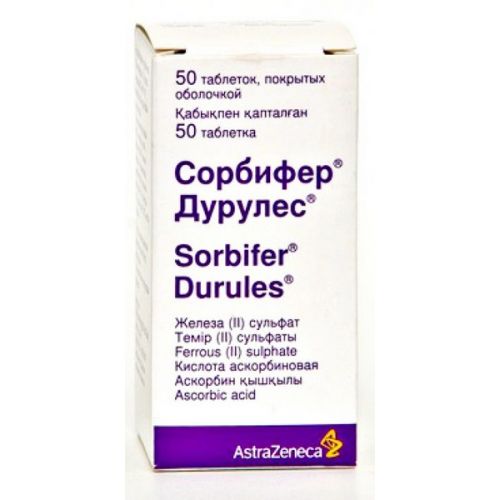
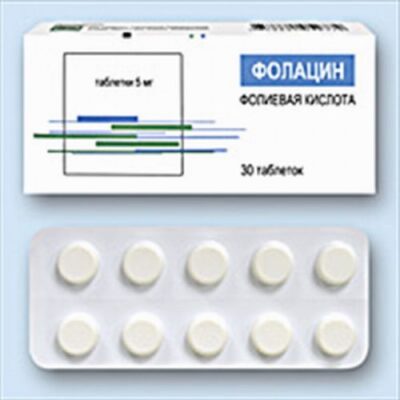
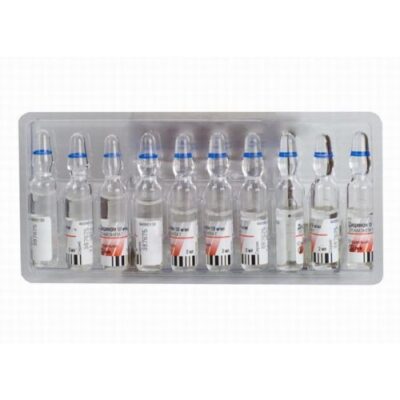
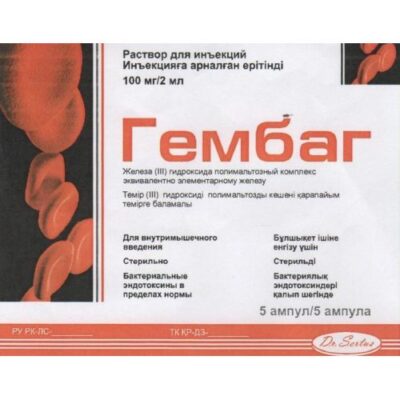
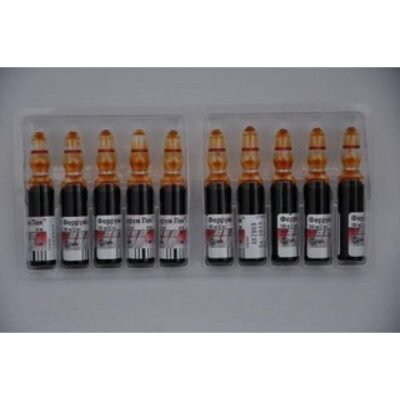
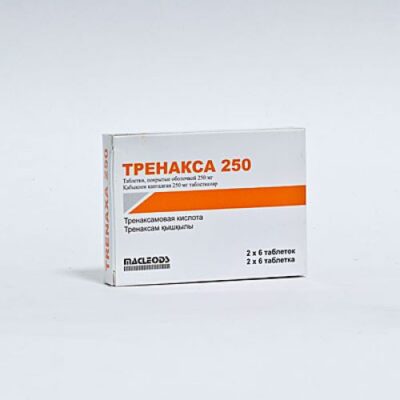
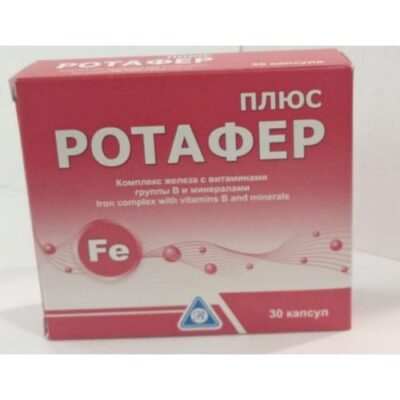
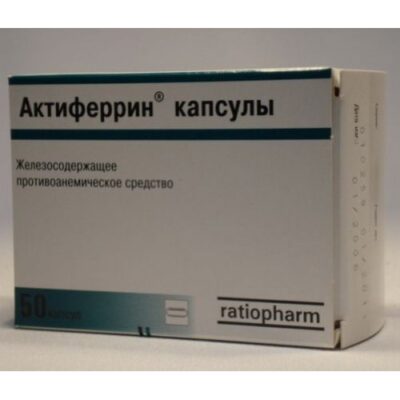
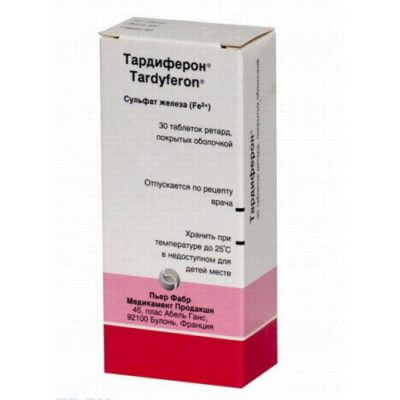
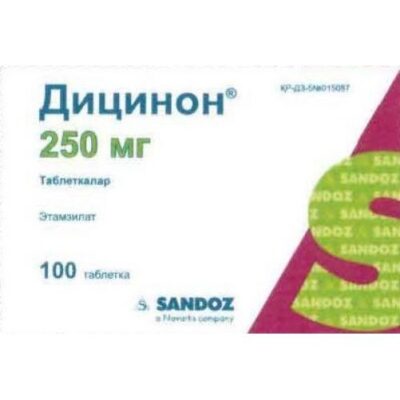
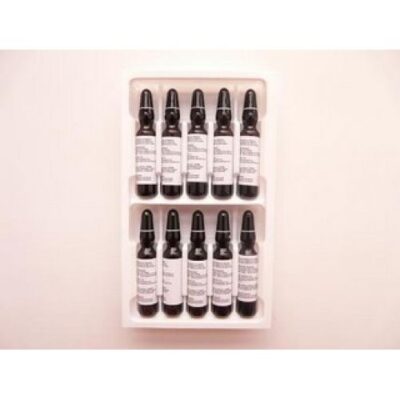






Reviews
There are no reviews yet.